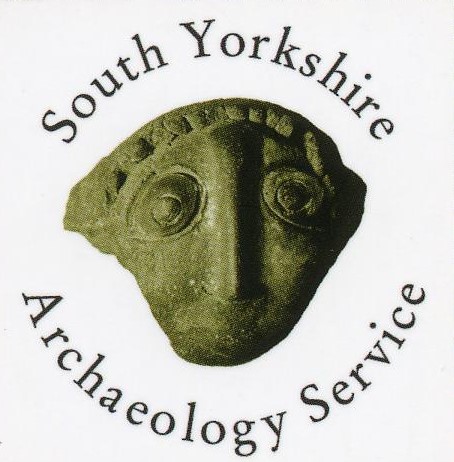Third Coppice Wheel (Rivelin Waterpower Sites)
Location/Address
400m downstream of Rails Road Bridge, Rivelin Valley, Sheffield S6 5SH
Type
Other site, structure or landscape
Assets that cannot fit any of the other categories. This category includes sites of archaeological interest, where the original form and function may not be apparent without the use of archaeological techniques and interpretation.
Description
Former water-powered grinding Wheel and water management system. One of the Rivelin Waterpower Sites. Also known as "Paper Mill".
Third Coppice Wheel and associated water management system are the remains of a water-powered mill site built in the 1750s. This site was initially used for cutlery grinding and later converted to a paper mill. By 1905 the site was empty. In 1852 the property comprised one paper mill, two drying houses, a rope shed, a long rolling house, stables and cowshed, and a dwelling, along with several other buildings – it is hard to believe that there was once such an extensive complex of buildings here, as the site is now largely obscured by landslip.
The water management system extends to the north-east and south-west of the site of the former mill buildings. The wide Third Coppice weir is one of the most attractive features of the Rivelin Valley. It is a natural waterfall that has been raised by a single course of stone blocks stapled together. It can be crossed (with care) when water levels are sufficiently low. The mill dam still holds water, but is silted and partially overgrown.
The site of the Third Coppice Wheel lies to the south of Rivelin Valley Road, about 400 m downstream from Rails Road. The site is owned by Sheffield City Council and there is open access. A public footpath (the Rivelin nature and heritage trail) passes the site. The trail can be accessed from various points along Rivelin Valley Road, and surrounding footpaths.
A marker post installed at the site by Rivelin Valley Conservation Group gives a brief history and links to a website where further information and pictures can be found.
Third Coppice Wheel is one of the 20 water-powered mills built in the Rivelin Valley . This sequence of Rivelin mills and mill dams forms an essential part of Sheffield’s heritage. They also have a broader national and even international significance in relation to the history of the Industrial Revolution in Sheffield.
Further information and pictures of Third Coppice Wheel and other sites in the Rivelin valley can be found at https://rivelinvalley.org.uk/rivelin-trails-2/. See also the books ‘Walking the Rivelin’, by Sue Shaw and Keith Kendall (6th edition, 2019, Rivelin Valley Conservation Group) and ‘Water Power on the Sheffield Rivers’, by C. Ball, D. Crossley, N. Flavell (Editors), (2nd Edition (2006), South Yorkshire Industrial Society).
Statement of Significance
Age
Built in the 1750s. By 1905 the site was empty.Rarity
This asset is an integral part of an especially rare system of waterpowered sites, described in more detail in the Rivelin Waterpower Sites asset. The use of a natural waterfall to serve as a weir is of extreme rarity. Upland streams such as those in Sheffield are one of the few environments in which this technique would be possible. One of relatively few local waterpowered sites used for an industry (paper-making) not directly connected with the metal trades. Also unusual for its associated clean water supply from the Black Brook, a tributary of the Rivelin.Architectural and Artistic Interest
This site is one of a group that collectively and individually demonstrate the construction techniques and interrelationships of waterpowered sites, described in more detail in the Rivelin Waterpower Sites asset. The weir is a natural waterfall that has been raised by a single course of stone blocks stapled together, and is one of the most attractive features of the Rivelin Valley, making it of great aesthetic value (even though not designed with this in mind) as well of significant technological interest. The wheel was set at a low level, the base of the pit lower than the river, with a long tail goit to allow the river to fall to the level of the goit. This is a technique used where the limitations of the site do not allow for the more usual long head goit. Clean water for the paper mill provided from the Black Brook via an aqueduct. Remains of a miniature dam on the Black Brook for this supply are still visible. This illustrates the variety of ways that the peculiar local topography could be used to serve the needs of industry.Group Value
This site contributes to the significance of the Rivelin Waterpower Sites asset and to the waterpower sites on other rivers in the city, and is integral to an understanding of the role and impact of waterpower in Sheffield.Historic Interest
This site is of historic interest in its illustration of the uses of waterpower, central to the reputation fame and identity of Sheffield; the many and varied uses for waterpower; the industrial development of the area; the impact of communications and topography; the lives and trades of working people; and the practice and policy of landowners, This is described in more detail in the Rivelin Waterpower Sites asset. The conversion of the site from the metal trades to paper making reflects contemporary changes in society and the needs of industry.Archaeological Interest
This site has the potential for underground remains that with further investigation could reveal their development over time, including changes of use and the evolution of industrial processes and construction techniques. Because the sites were not overtaken by later industrial development, any remains are likely to be relatively intact.Landmark Status
○ The Rivelin Valley is an extremely popular leisure destination for local people, largely defined by its waterpower remains, including this site. The unusual weir formed from a natural waterfall make this site a particularly notable and memorable feature of the valley.Date Listed
15 Aug 2022
Last Updated
19 Apr 2022
Comments and Feedback
Do you have any questions or more information about this record?



.jpg)

